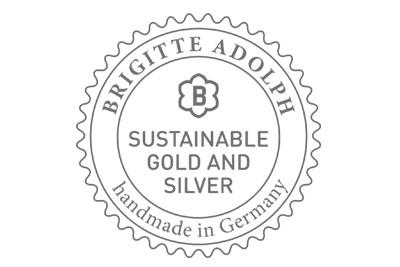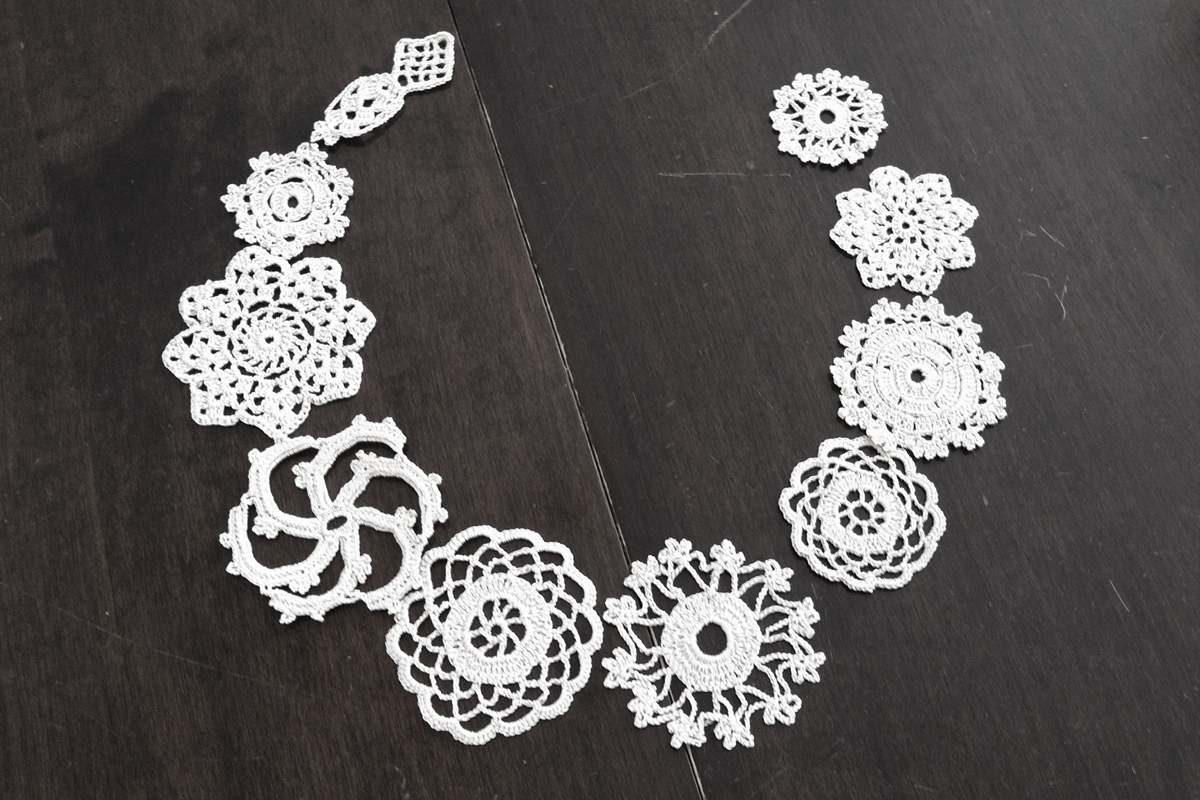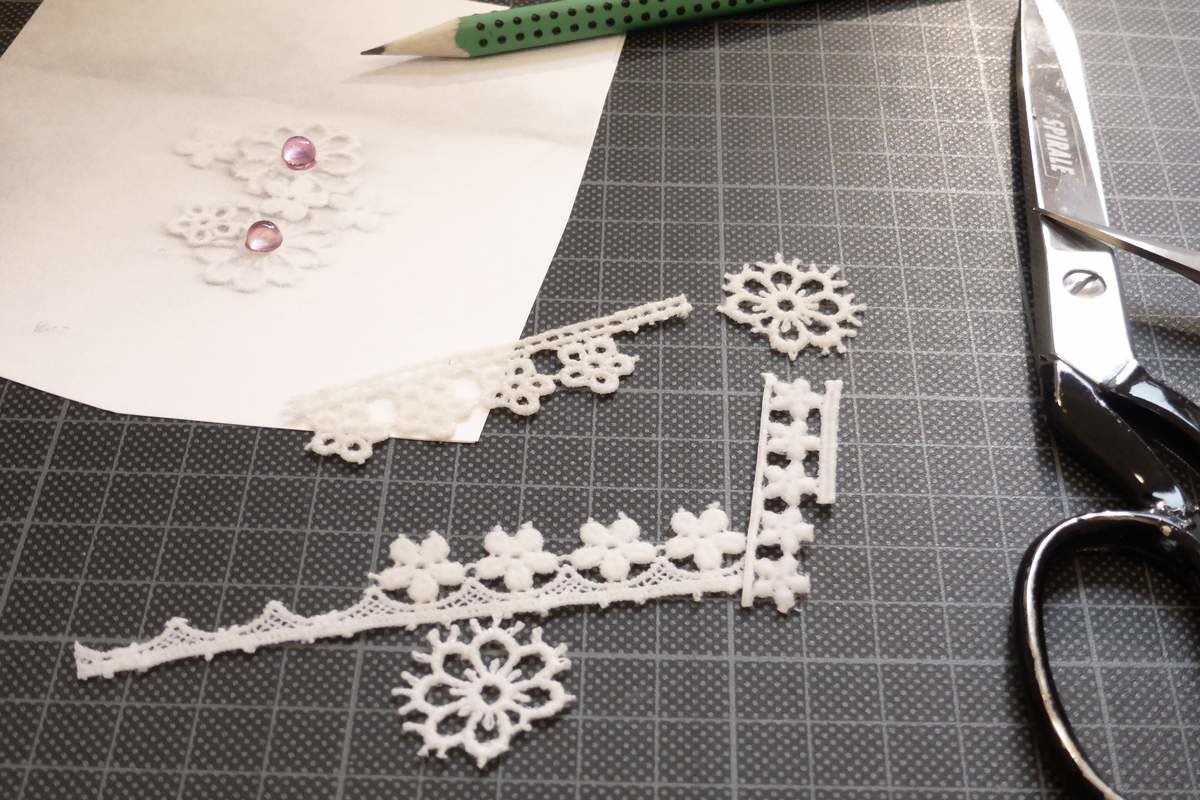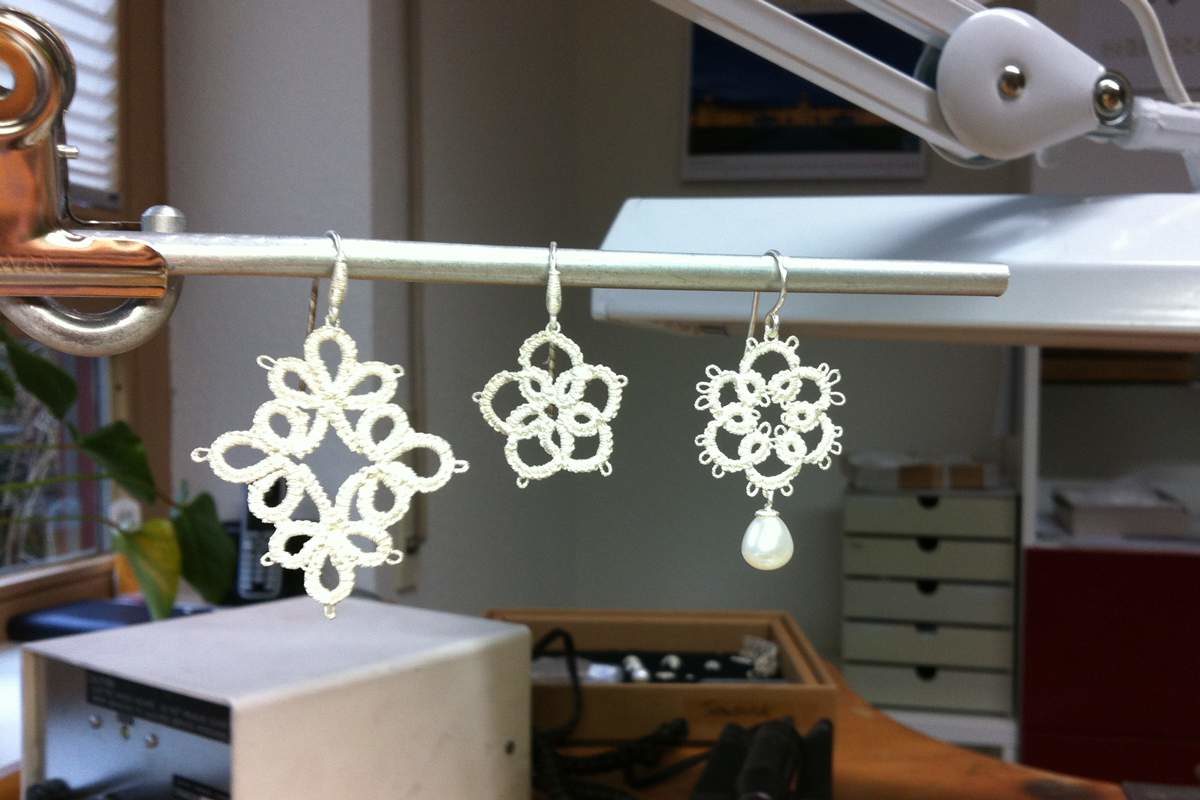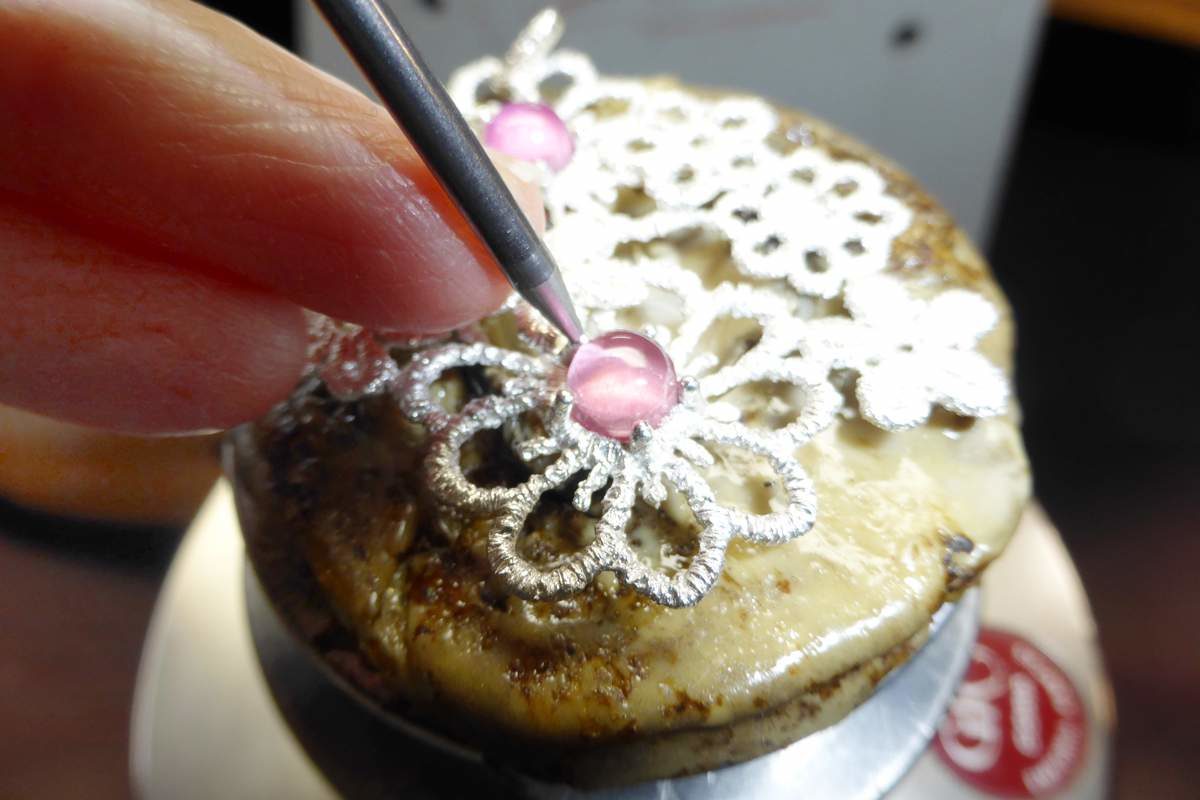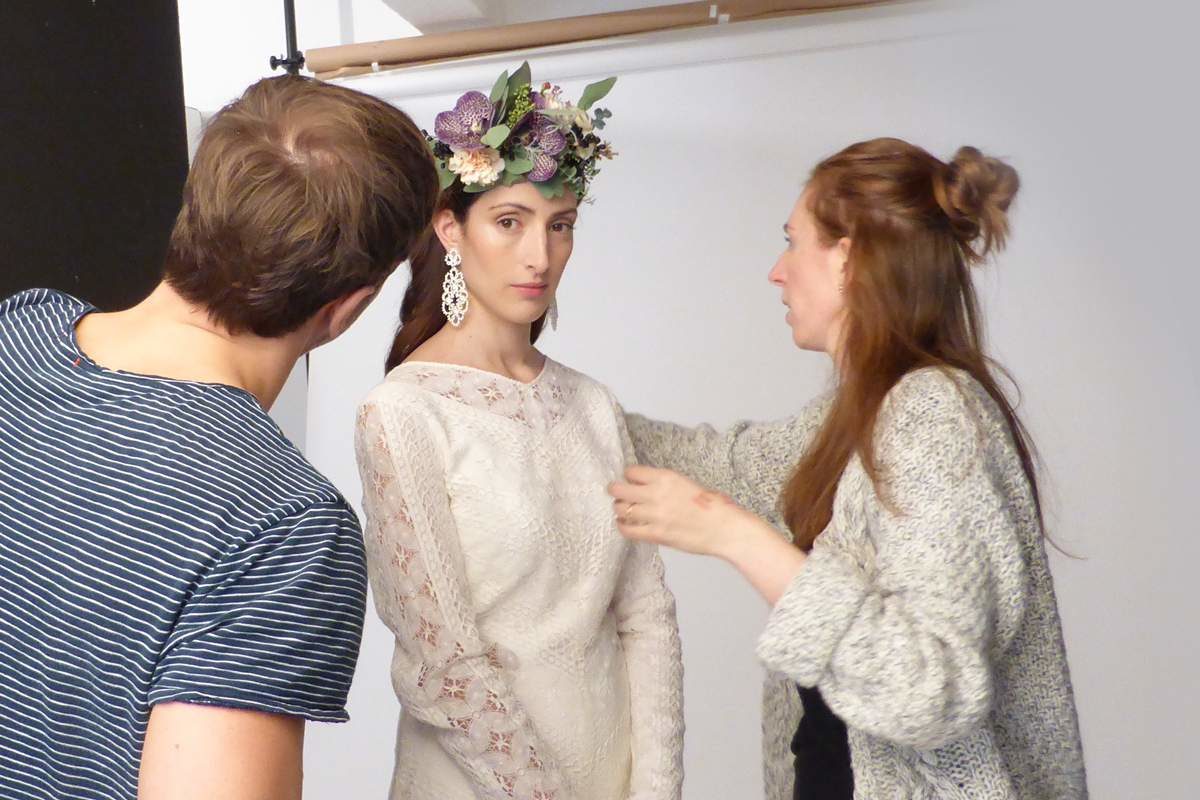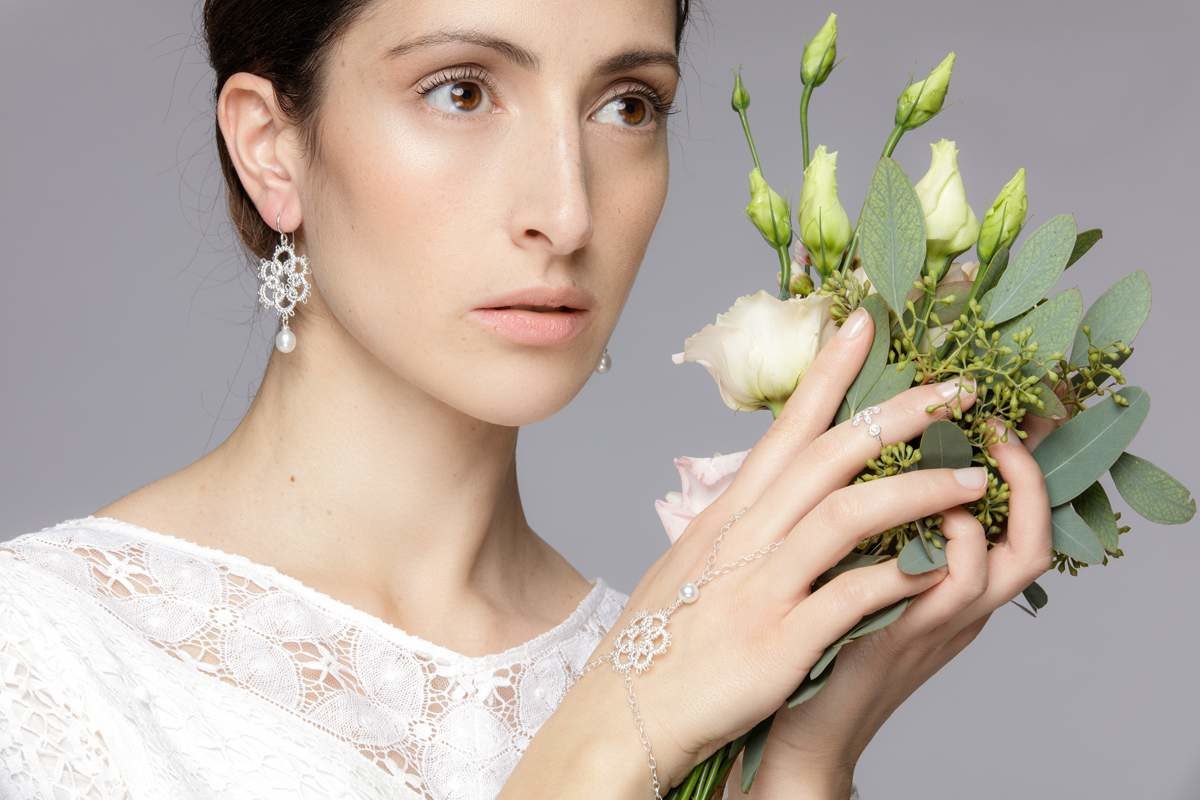Memories play a central role in Brigitte Adolph’s work. She discovered her fondness for lace during a study course project when she worked on embroidered keepsakes from her family. These first emerged as visual compositions, then as items of jewellery in lace that she crocheted herself.
A peek into the studio
“My studies gave me the freedom to invent something new,” she says. Over the years Brigitte Adolph developed a highly specialised lace technique that blends the rediscovery of ancient traditions to modern jewellery design.
Crochet , lace-making, forging – is it that easy?
Brigitte Adolph has long since gained the reputation of an ambassador in lace-like jewellery. Her exact techniques are, of course, a closely guarded secret, but her inspiration is evident to those familiar with the traditions of times gone by:
Venetian lace motifs, patterns from Nottingham’s famous lace tradition, delicate borderwork that seems so familiar from the old masters…
Brigitte Adolph goes go so far as to say that the painting of a merchant’s daughter with a large lace collar inspired her opulent Merchant’s daughter earrings.
The graduate designer’s work will spirit you away into times long past, while still remaining firmly seated in the mode of the present.
Made with sustainable material in Germany
All pieces of jewellery are designed and manufactured in Brigitte’s studio near Karlsruhe. Brigitte uses recycled precious metal, which conserves resources through reuse.
Her studio is always looking for ways to source as many materials as possible from sustainable production. The studio uses eco-electricity.
Diamonds and Pearls
The diamonds used in the brilliant cut refers to the designer from Germany’s oldest diamond grinding shop, which is a WFDB member. The diamonds used are certified according to the Kimberly process.
This procedure is intended to prevent so-called blood diamonds from entering the diamond market and, in the long term, to calm the conflict-ridden situation of diamond-producing countries in southern Africa.
The Kimberly Process also addresses social issues such as child labor and safety and environmental challenges in diamond mining.
Brigitte Adolph gets her freshwater pearls from sustainably working companies. The high quality of the used pearls already indicates good ecological conditions on the pearl farm.
